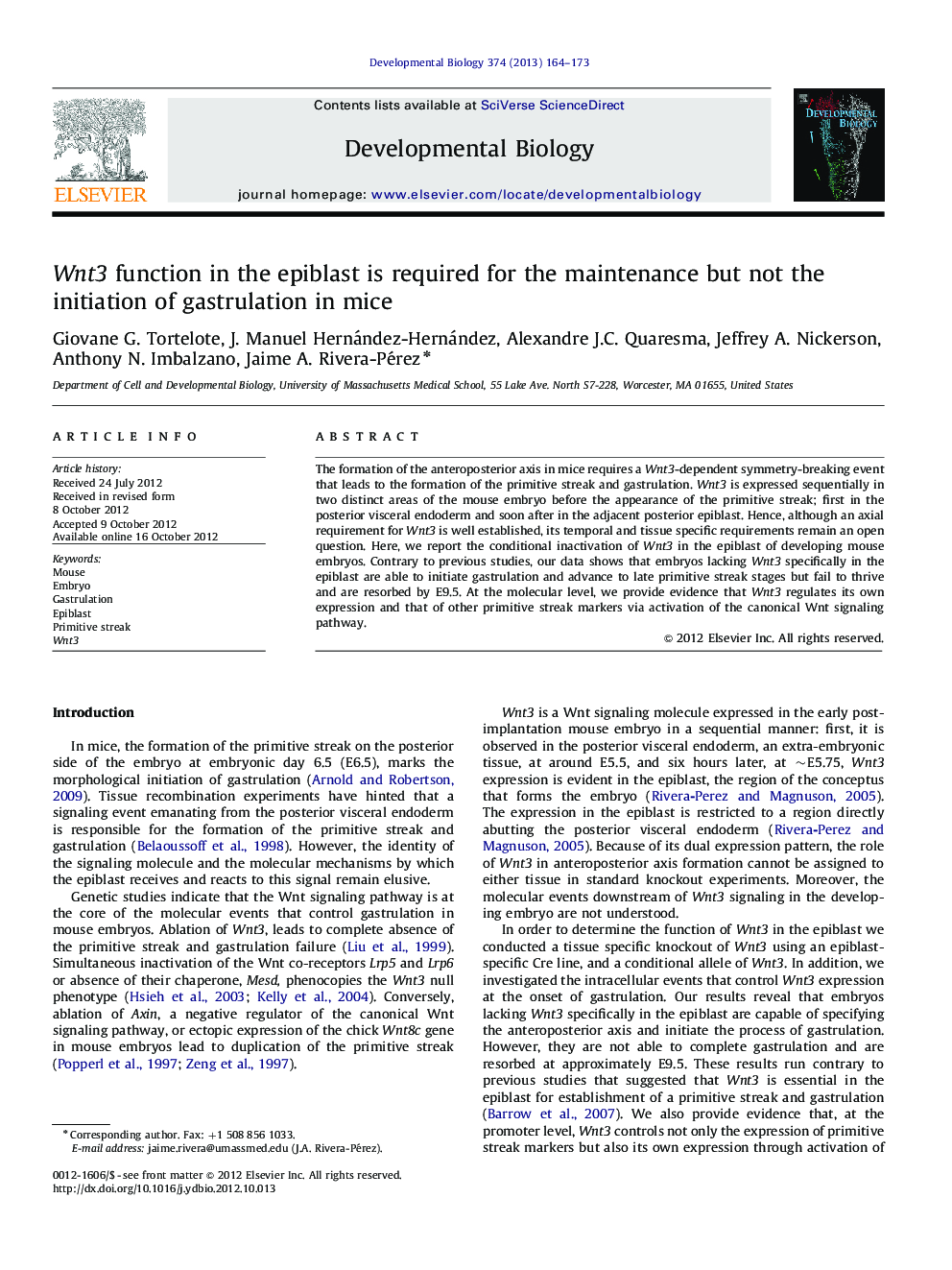| Article ID | Journal | Published Year | Pages | File Type |
|---|---|---|---|---|
| 2173119 | Developmental Biology | 2013 | 10 Pages |
The formation of the anteroposterior axis in mice requires a Wnt3-dependent symmetry-breaking event that leads to the formation of the primitive streak and gastrulation. Wnt3 is expressed sequentially in two distinct areas of the mouse embryo before the appearance of the primitive streak; first in the posterior visceral endoderm and soon after in the adjacent posterior epiblast. Hence, although an axial requirement for Wnt3 is well established, its temporal and tissue specific requirements remain an open question. Here, we report the conditional inactivation of Wnt3 in the epiblast of developing mouse embryos. Contrary to previous studies, our data shows that embryos lacking Wnt3 specifically in the epiblast are able to initiate gastrulation and advance to late primitive streak stages but fail to thrive and are resorbed by E9.5. At the molecular level, we provide evidence that Wnt3 regulates its own expression and that of other primitive streak markers via activation of the canonical Wnt signaling pathway.
► We ablate Wnt3 in the epiblast of early post-implantation mouse embryos. ► Wnt3 in the epiblast is required for maintenance but not initiation of gastrulation. ► Wnt3 activates the canonical Wnt pathway and expression of gastrulation markers. ► The canonical Wnt pathway controls activation of the Wnt3 promoter in vivo. ► We provide a contrasting view of the role of Wnt3 in axial development in mice.
